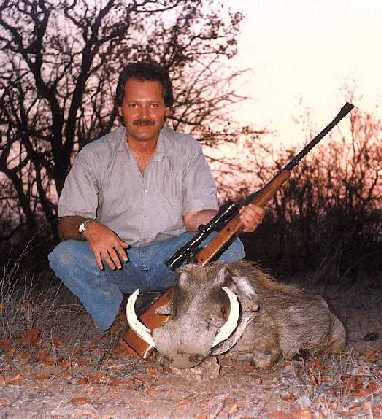Warthog
The Warthog or Common Warthog (Phacochoerus africanus) is a wild member of the pig family that lives in grassland, savanna, and woodland in Sub-Saharan Africa. In the past it was commonly treated as a subspecies of P.aethiopicus, but today that scientific name is restricted to the Desert Warthog of northern Kenya, Somalia, and eastern Ethiopia.
The common name comes from the four large wart-like protrusions found on the head of the warthog, which serve the purpose of defence when males fight as well as a fat reserve.
Warthogs range in size from 0.91 to 1.5 m (3.0 to 4.9 ft) in length and 50 to 75 kg (110 to 170 lb) in weight. A warthog is identifiable by the two pairs of tusks protruding from the mouth and curving upwards. The lower pair, which is far shorter than the upper pair, becomes razor sharp by rubbing against the upper pair every time the mouth is opened and closed. The upper canine teeth can grow to 23 cm (9.1 in), and are of a squashed circle shape in cross section, almost rectangular, being about 4.5 cm (1.8 in) deep and 2.5 cm (0.98 in) wide. The tusk will curve 90 degrees or more from the root and the tusk will not lie flat on a table, as it curves somewhat backwards as it grows. The tusks are used for digging, for combat with other hogs, and in defence against predators, the lower set can inflict severe wounds.
Warthog ivory is taken from the constantly growing canine teeth. The tusks, more often the upper set, are worked much in the way of elephant tusks with all designs scaled down. Tusks are carved predominantly for the tourist trade in East and Southern Africa.
The head of the warthog is large with a mane that goes down the spine to the middle of the back. There is sparse hair covering the body. Color is usually black or brown. Tails are long and end with a tuft of hair. Common warthogs do not have subcutaneous fat and the coat is sparse, making them susceptible to extreme environmental temperatures.
The male is called a boar, the female a sow, and the young piglets.


